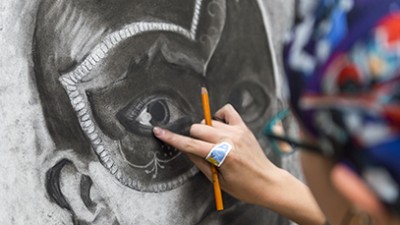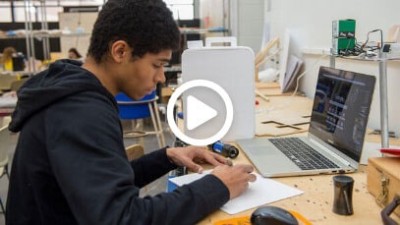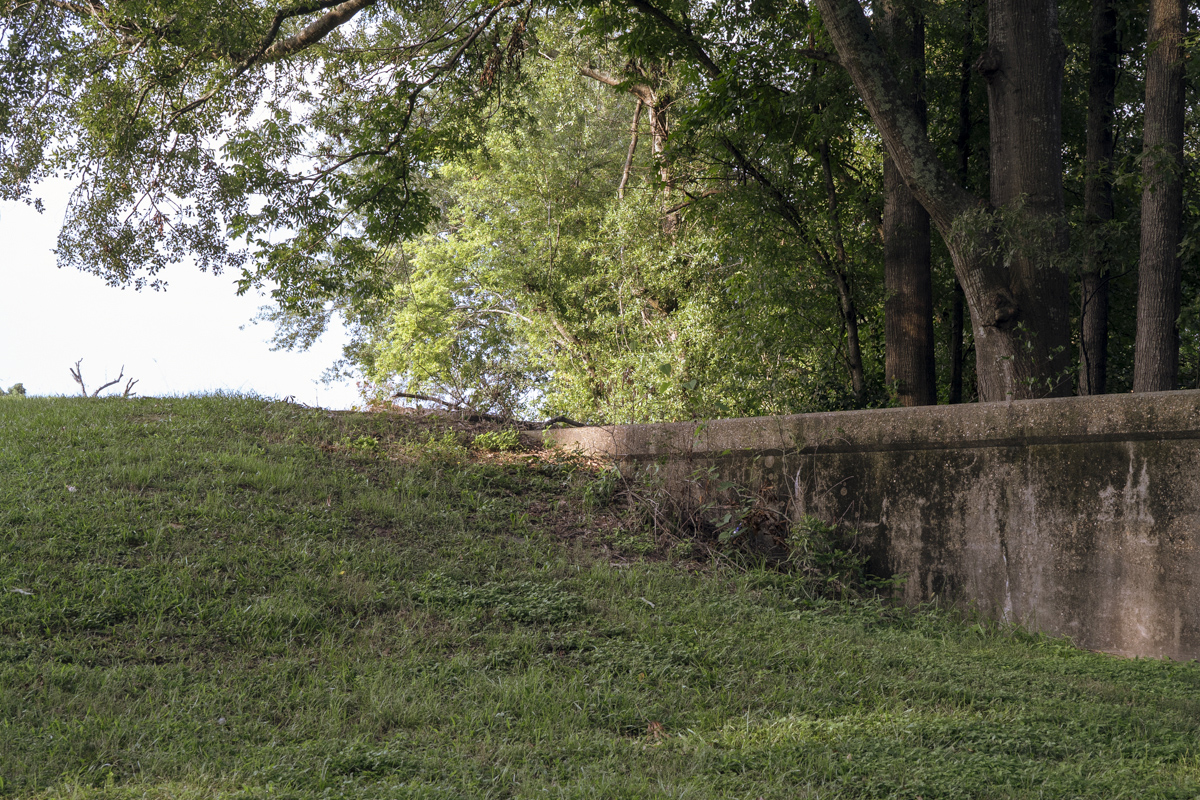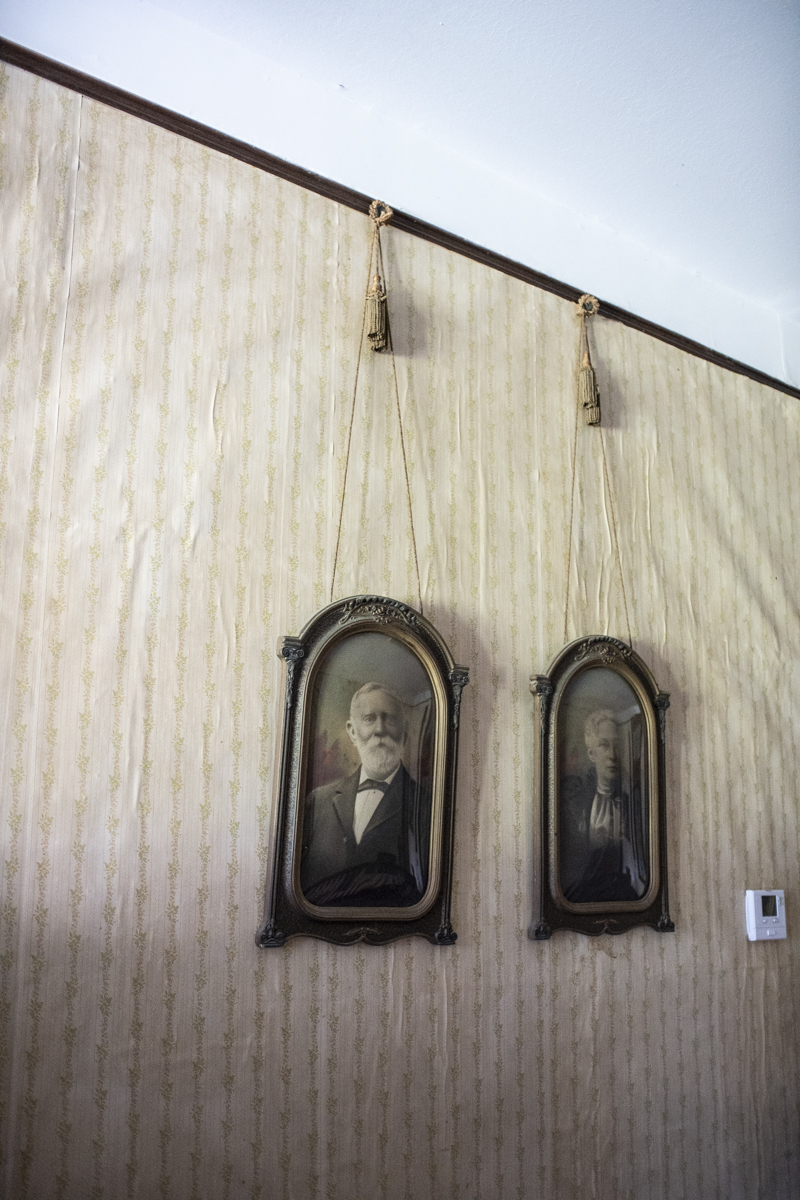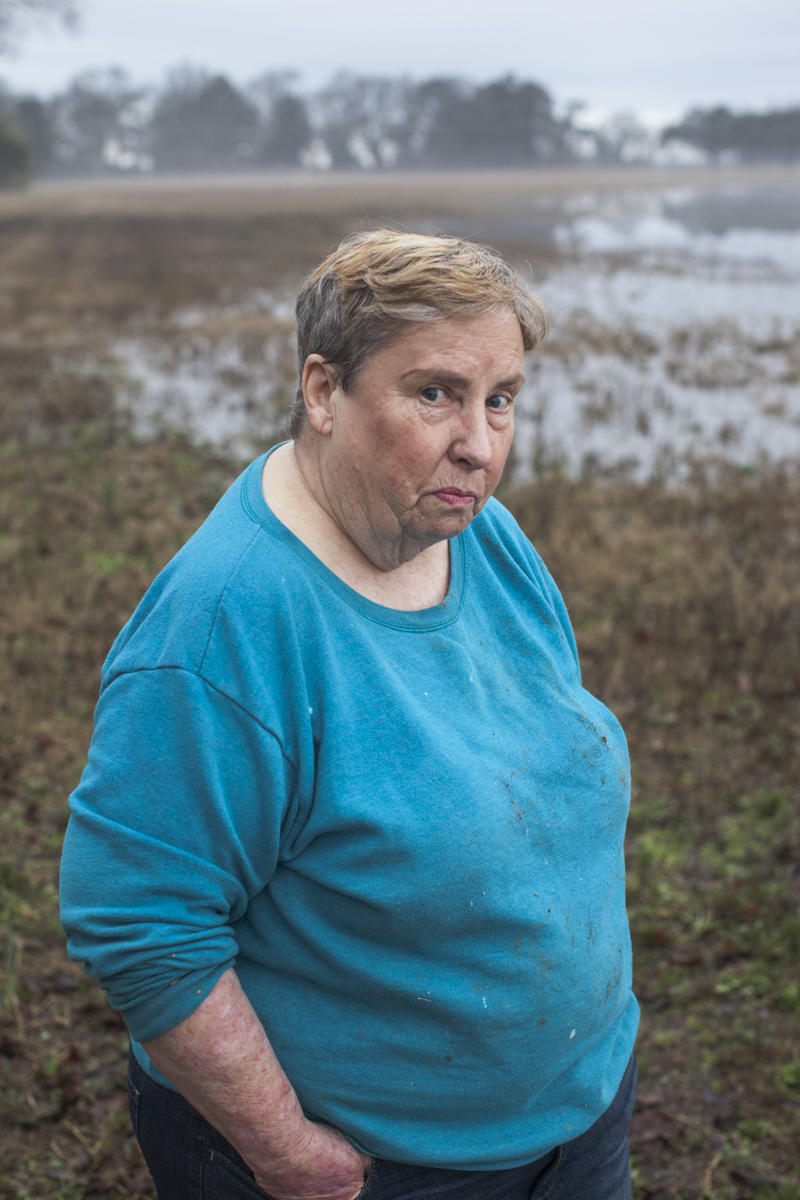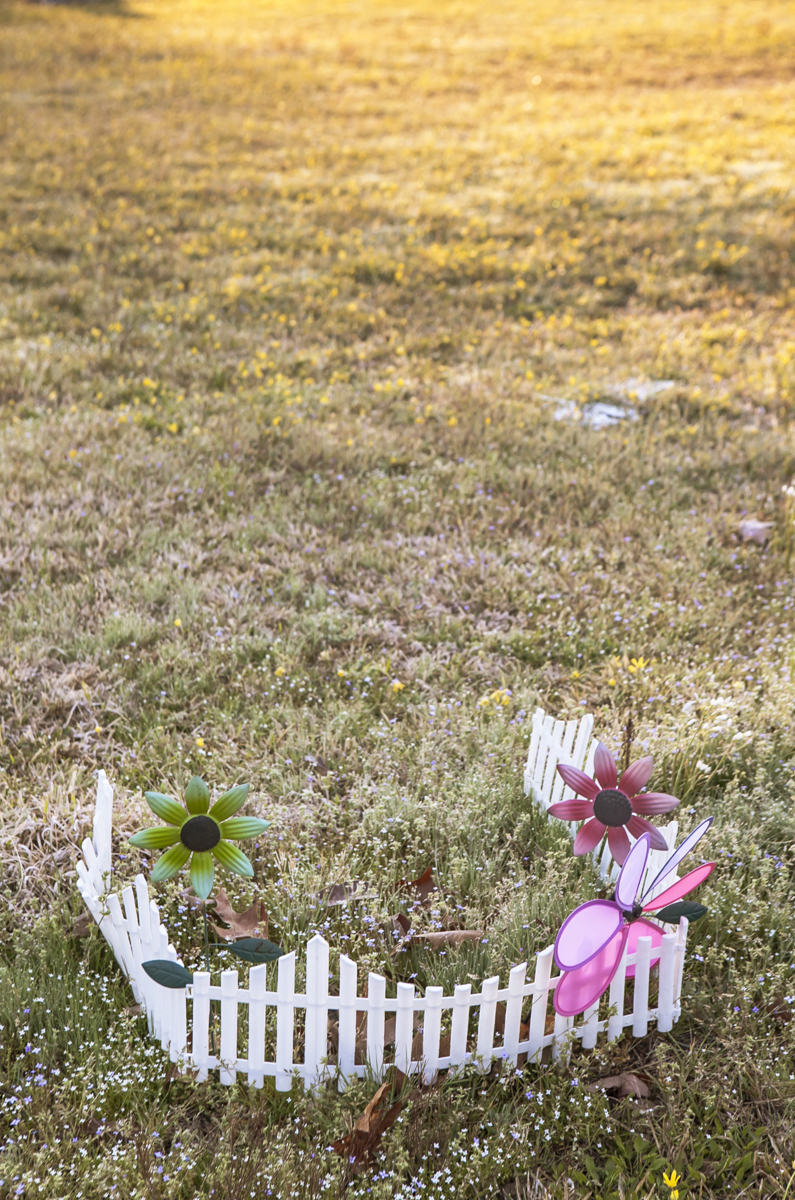Professor earns grant for poignant exploration of ancestral ties to slavery
Meredith Davenport
To Meredith Davenport, this aging levee along the Quachita River in Monroe, La., seems unlikely to protect against a catastrophic flood. She said it symbolizes things not talked about and the dangers of fragile, old walls that block hidden conversations — symbolic themes of her ongoing personal memoir history project "Membering; A Family Diary."
Meredith Davenport has traversed the globe, covering social justice and other issues as a photojournalist for the likes of HBO, National Geographic, and The New York Times.
And her most recent acknowledgement was a career moment she likened to being hired for her first National Geographic assignment.
Davenport, associate professor of photojournalism in RIT’s School of Photographic Arts and Sciences, was awarded the 1492/1619 American Aftermaths Grant from The Aftermath Project, a non-profit organization supporting projects that document the lingering effects of post-war and conflict.
Meredith Davenport
Inside one of the houses owned by Meredith Davenport’s ancestors in Mer Rouge, La., where the main street is named Davenport Avenue. This was the home of the last plantation owner, Christopher Columbus Davenport, whose ancestors continue living in the home that is untouched in many places.
Davenport received grant funding to continue her decade-long project, “Membering; A Family Diary.” It is a tapestry of historical research, photography, poetry, and fine art used to explore her family’s role in enslavement dating back to the late 1700s — from the captain of a slave trade ship in Providence, R.I., to establishing a cotton plantation in northeastern Louisiana.
“While there are larger questions I hope will arise from this project, I chose to frame my work as a diary of the personal narratives around my family,” Davenport’s statement on The Aftermath Project website reads. “It is important that we confront the racism that exists in our family archives and the damaging narratives that are attached to them.”
The grant is a crowning achievement served with a dose of poignancy given the work’s sensitive themes.
“There is something about this particular accomplishment that is sweeter and sour in the same breath because it’s about a difficult thing,” Davenport said. “It’s really hard to go and look at these histories of slavery and enslavement, and the narratives around them.”
Using family documents mixed with portraits of present-day landscapes and family members in areas where her ancestors settled (Mer Rouge, La., and the New England region), Davenport’s chronicle aims to bridge a dark past with a more optimistic future.
Meredith Davenport
Caroline, pictured, was the librarian at the Bastrop Public Library that led Meredith Davenport to discover her Black cousins. Davenport describes Caroline as a fierce and kind poet who shared her home with many cats, dogs and goats, and someone who was instrumental in making her project happen.
“My work is not about redemption,” said Davenport, who grew up in Baltimore, Md., visiting her father near Mer Rouge in the summers. “It is about inviting people to creatively engage with the cyclical process of witnessing, learning, and for repairing as a collective.
“I wouldn’t consider this journalism,” she added. “It’s really creative, memoir types of things, layered with historical narratives.”
Davenport has intermittently worked on “Membering” since 2014 — taking requisite breaks to momentarily separate from the project’s heavy topics related to close family and ancestors.
“I have to work on it when I can emotionally work on it,” she said. “It takes a lot of energy.”
Davenport published five chapbooks that showcase the interplay of her powerful imagery, research abilities, creative writing, and fine art practice.
Meredith Davenport
A nameless grave marked by a plastic fence in the African American Cemetery in Mer Rouge, La. The white members of the community are buried across the road. There are many graves marked Davenport in both areas.
“I call them documentary poetry,” Davenport said. “They use language from the documents I found and collide them with images that I’ve made and documents I found. I don’t want to tell people how to feel, and poetry is a space where you can settle with things. I hope they’re less didactic and more open to people’s thoughts and interpretations because everyone has their own history.”
More recently, Davenport has been photographing in Providence, R.I., and Cape Cod, Mass., to focus on the northern-based stories of her ancestors. It is a slice of the project made possible by an RIT Faculty Education and Development (FEAD) Grant.
“I have this dichotomy of the south and the north in me,” Davenport said. “I’m interested in how those different stories collide with the narratives I’m finding in the historical research.”
She plans to continue working in New England with the 1492/1619 American Aftermaths Grant support.
“I always wanted to do the northern stories on my family history and there are a lot of attitudes and narratives to explore up here,” Davenport said. “(Recently) I was in Cape Cod for a week making photographs along the shore where my ancestors’ ship probably landed using X-Ray film. Keeping a certain level of play, engagement, and openness in the work allows me to keep doing it.”


